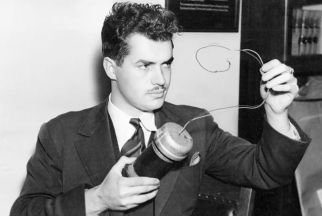 There is more to the practice of Paganism and the development of science and technology than a lot of historians would not go into detail about. The occult means “that which is hidden,” so it doesn’t get talked about much unless you bring up cults or the paranormal.
There is more to the practice of Paganism and the development of science and technology than a lot of historians would not go into detail about. The occult means “that which is hidden,” so it doesn’t get talked about much unless you bring up cults or the paranormal.
This changes when you get to important historical figures like Jack Parsons. Parsons was an inventor and engineer who pioneered in rocket engineering and propulsion. He attended several universities, including Stanford, but never attained any degrees. He invented the first rocket jet, and pioneered in both liquid and solid fuel rockets. He was a founder of organizations like JPL and Aerojet Engineering Corporation. At one point in his life, Parsons was also involved with Marxism, and was being investigated by the FBI under the suspicion of espionage. After his death, he was later recognized as one of the most important figure in the US space program, and they have since named a crater on the moon after him.
Parsons was apart of the new Thelemic cult called the ‘OTO’, that Aleister Crowley invented. He converted after reading a few of Crowleys books and had eventually met Crowley and knew him on a personal level. Parson’s involvement in magic took up a huge chunk of his life, one of his biographers noting that
[Parsons] treated magic and rocketry as different sides of the same coin: both had been disparaged, both derided as impossible, but because of this both presented themselves as challenges to be conquered. Rocketry postulated that we should no longer see ourselves as creatures chained to the earth but as beings capable of exploring the universe.
Similarly, magic suggested there were unseen metaphysical worlds that existed and could be explored with the right knowledge. Both rocketry and magic were rebellions against the very limits of human existence; in striving for one challenge he could not help but strive for the other.” – Pendle, George (2005). Strange Angel: The Otherworldly Life of Rocket Scientist John Whiteside Parsons

America’s first rocket-assisted aircraft, developed by Parsons.
In the mid 1940’s, Parsons befriend L Ron Hubbard (before he founded Scientology), and the two performed magical rituals together that they called the “Babalon Working“. Later, after their ‘working’ was done, L. Ron Hubbard would defraud Parsons out of his life savings.
Parsons wrote several books, with such cuddly titles like “the Book of Babalon” and “The Book of the Antichrist.” The aim of his famous ‘Babalon Working’ was to, in no unclear language, summon the whore of Babalon to the earth mentioned in the Book of Revelations, to aid in bringing the end of all things to come. He believed he succeeded and said;
Its manifestations may be noted in the destruction of old institutions and ideas, the discovery and liberation of new energies, and the trend towards power governments, war, homosexuality, infantilism, and schizophrenia.
This force is completely blind, depending upon the men and women in whom it manifests and who guide it. Obviously, its guidance now tends towards catastrophe.
Parson was seriously involved in dark magical ceremonial rites. The obituary of his local newspaper described him as “handsome 37-year-old rocket scientist,” and was “a man who led a double existence [as] a down-to-earth explosives expert who dabbled in intellectual necromancy.” What he wrote down about what he did may be too dark for the average person to read, because its its gruesome, shocking, and very weird.
At one point at the end of his life, he saw himself as the Anti-Christ. His wife, an artist, created a portrait of him as the angel of death. Later in life, because of accusations of espionage, he no longer got to work in the rocketeering field. He died in an accidental explosion in dealing with certain chemicals at his house, working on a project for a film set. Few have speculated that this may have also been either an attempted suicide or assassination.
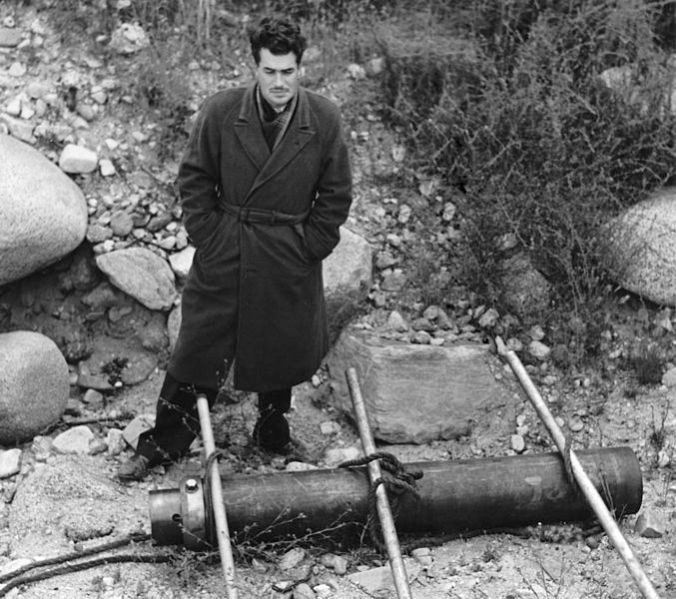
Parsons standing over a used Rocket-Assisted Take Off cannister
As a personal anecdote to go with this story; Back in the day when I had a desktop completely dedicated to a Voluntary/Grid computing program called BOINC, developed by Berkeley -which used mass computation for crunching scientific data- I once spoke to a man over the internet who said that he worked at CERN. He relayed to me that he used to be a reader of Crowley and a Thelemic practitioner (for those who may not know, is a modern practice of paganism). While he was very staunch about his previous involvement with the occult, he relayed to me that he quit everything that had to do with it and focused primarily at CERN, because, and I quote: “physics is the new magic”.
I have not been able to confirm that any of that is true- If he really was a physicist working at CERN and if he did in fact practice occultism. The other options are that he was insane or just a troll- possibly all of the above. I have absolutely no bias either way- But I am sure that would make a great plot in a book somewhere.
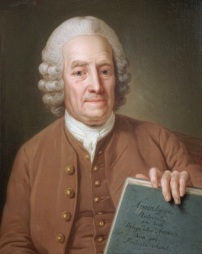 Emanuel Swedenborg was a renowned metallurgist and mystic in the mid eighteenth-century. Among his many scientific accomplishments, Swedenborg displayed an astonishingly modern understanding of brain functioning.
Emanuel Swedenborg was a renowned metallurgist and mystic in the mid eighteenth-century. Among his many scientific accomplishments, Swedenborg displayed an astonishingly modern understanding of brain functioning. that evening, he suddenly announced to his friends that he was having a vision of Stockholm burning, about 300 miles away. Later that evening he told them that the fire stopped three doors from his home.
that evening, he suddenly announced to his friends that he was having a vision of Stockholm burning, about 300 miles away. Later that evening he told them that the fire stopped three doors from his home. “It is at least implicitly understood, everyone accepts the notion that intelligence is not conditioned (and indeed one cannot consistently do otherwise). Consider the example of an attempt to assert that all mans actions are conditional and mechanical… Either it is said that man is basically a product of his hereditary constitution, or else that he is determined entirely by environmental factors.
“It is at least implicitly understood, everyone accepts the notion that intelligence is not conditioned (and indeed one cannot consistently do otherwise). Consider the example of an attempt to assert that all mans actions are conditional and mechanical… Either it is said that man is basically a product of his hereditary constitution, or else that he is determined entirely by environmental factors. Indeed it is necessarily implied, in any statement, that the speaker is capable of talking from intelligent perception, which is in turn capable of a truth that is not merely the result of a mechanism based on meaning or skilled acquired in the past…
Indeed it is necessarily implied, in any statement, that the speaker is capable of talking from intelligent perception, which is in turn capable of a truth that is not merely the result of a mechanism based on meaning or skilled acquired in the past… One may perhaps usefully consider here the image of a radio receiver. When the output of the receiver ‘feeds back’ into the input, the receiver operates on its own, to produce mainly irrelevant and meaningless noise, but when it is sensitive to the signal on the radio wave, its own order of inner movement of electric currents (transformed into sound waves) is parallel to the order in the signal and thus the receiver serves to bring a meaningful order originating beyond the level of its own structure into movements on the level of its own structure. One might then suggest that in intelligent perception, the brain and nervous system respond directly to an order in the universe…“
One may perhaps usefully consider here the image of a radio receiver. When the output of the receiver ‘feeds back’ into the input, the receiver operates on its own, to produce mainly irrelevant and meaningless noise, but when it is sensitive to the signal on the radio wave, its own order of inner movement of electric currents (transformed into sound waves) is parallel to the order in the signal and thus the receiver serves to bring a meaningful order originating beyond the level of its own structure into movements on the level of its own structure. One might then suggest that in intelligent perception, the brain and nervous system respond directly to an order in the universe…“ But Wright did not want to die. He had heard about an exciting new drug called Krebiozen, and he begged his doctor to let him try it. At first his doctor refused because the drug was only being tried on people with a life expectancy of at least three months. But Wright was so unrelenting in his entreaties, his doctor finally gave in. he Gave Wright an injection of Krebiozen on Friday, but in his heart of hearts he did not expect Wright to last the weekend. Then the doctor went home.
But Wright did not want to die. He had heard about an exciting new drug called Krebiozen, and he begged his doctor to let him try it. At first his doctor refused because the drug was only being tried on people with a life expectancy of at least three months. But Wright was so unrelenting in his entreaties, his doctor finally gave in. he Gave Wright an injection of Krebiozen on Friday, but in his heart of hearts he did not expect Wright to last the weekend. Then the doctor went home. Again the results were dramatic. Tumor masses melted, chest fluid vanished, and Wright was quickly back on his feet and feeling great. He remained symptom-free for another two months, but then the American Medical Association announced that a nationwide study of Krebiozen had found the drug worthless in treatment of cancer. His cancer blossomed anew and he died two days later.
Again the results were dramatic. Tumor masses melted, chest fluid vanished, and Wright was quickly back on his feet and feeling great. He remained symptom-free for another two months, but then the American Medical Association announced that a nationwide study of Krebiozen had found the drug worthless in treatment of cancer. His cancer blossomed anew and he died two days later.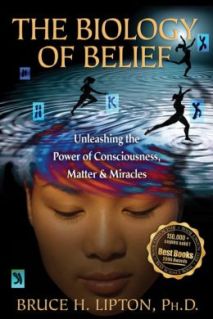 Buried in exceptional cases are the roots of a more powerful understanding of the nature of life – “more powerful” because the principles behind these exceptions trump established “truths.” The fact is that harnessing the power of your mind can be more effective than the drugs you have been programmed to believe you need. The research I discussed in the last chapter found that energy is a more efficient means of affecting matter than chemicals.
Buried in exceptional cases are the roots of a more powerful understanding of the nature of life – “more powerful” because the principles behind these exceptions trump established “truths.” The fact is that harnessing the power of your mind can be more effective than the drugs you have been programmed to believe you need. The research I discussed in the last chapter found that energy is a more efficient means of affecting matter than chemicals.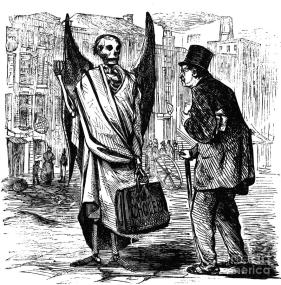 The man survived and Science, reflecting the unanimity of opinion of Germ Theory, had the audacity to say his criticism was incorrect? If it is claimed that this bacterium is the cause of cholera, and the man demonstrates that he is unaffected by germs… how can he be “incorrect”? Instead of trying to figure out how the man avoided the dreaded disease, scientists blithely dismiss this and other embarrassing “messy” exceptions that spoil their theories. Remember the “dogma” that genes control biology? Here is another example in which scientists, bent on establishing the validity of their truth, ignore pesky exceptions. The problem is that there cannot be exceptions to a theory; exceptions simply mean that the theory is not fully correct.
The man survived and Science, reflecting the unanimity of opinion of Germ Theory, had the audacity to say his criticism was incorrect? If it is claimed that this bacterium is the cause of cholera, and the man demonstrates that he is unaffected by germs… how can he be “incorrect”? Instead of trying to figure out how the man avoided the dreaded disease, scientists blithely dismiss this and other embarrassing “messy” exceptions that spoil their theories. Remember the “dogma” that genes control biology? Here is another example in which scientists, bent on establishing the validity of their truth, ignore pesky exceptions. The problem is that there cannot be exceptions to a theory; exceptions simply mean that the theory is not fully correct. There is more to the practice of Paganism and the development of science and technology than a lot of historians would not go into detail about. The occult means “that which is hidden,” so it doesn’t get talked about much unless you bring up cults or the paranormal.
There is more to the practice of Paganism and the development of science and technology than a lot of historians would not go into detail about. The occult means “that which is hidden,” so it doesn’t get talked about much unless you bring up cults or the paranormal.
